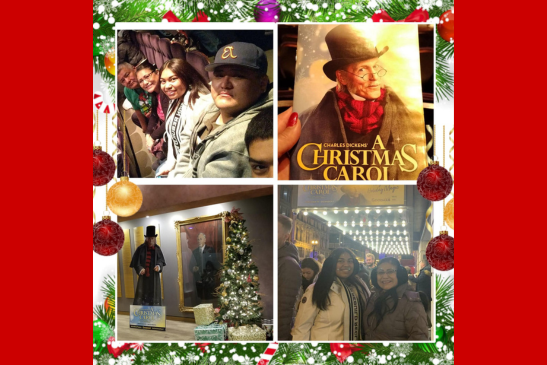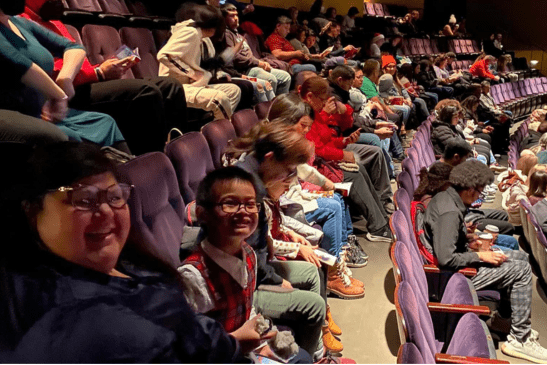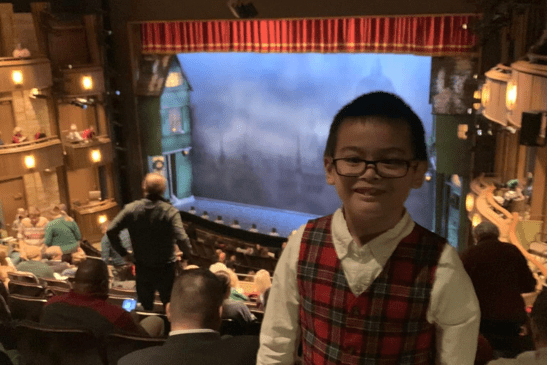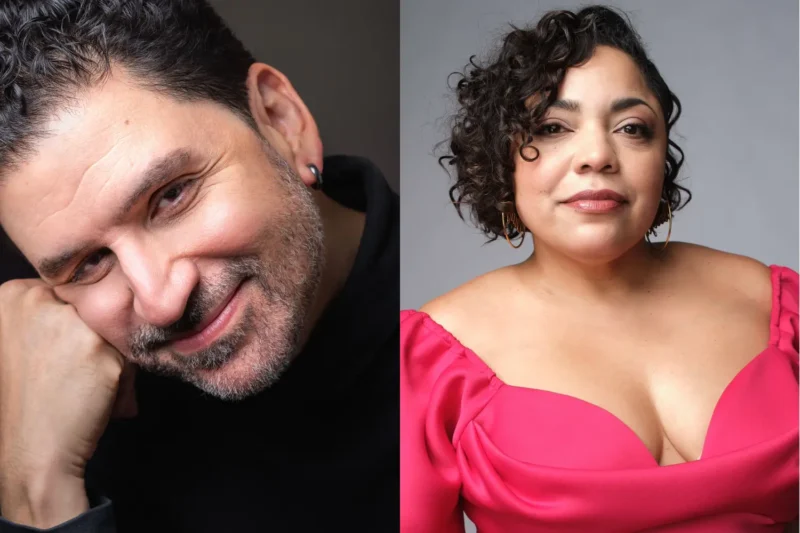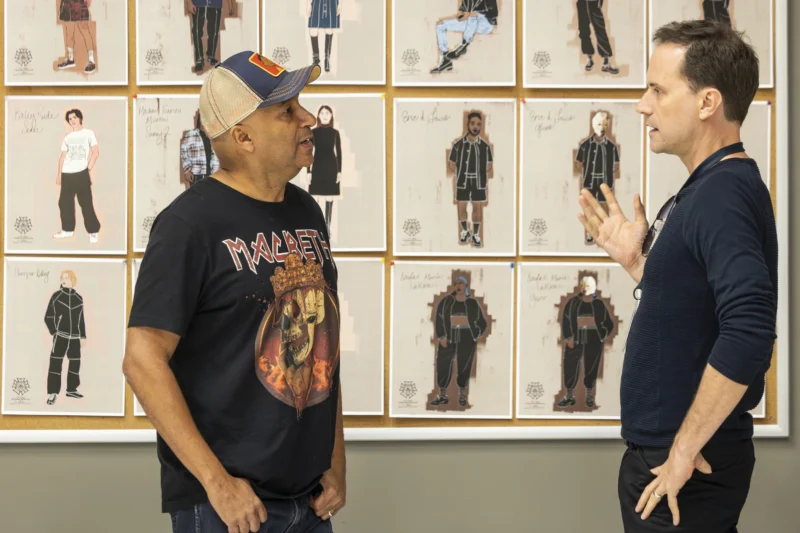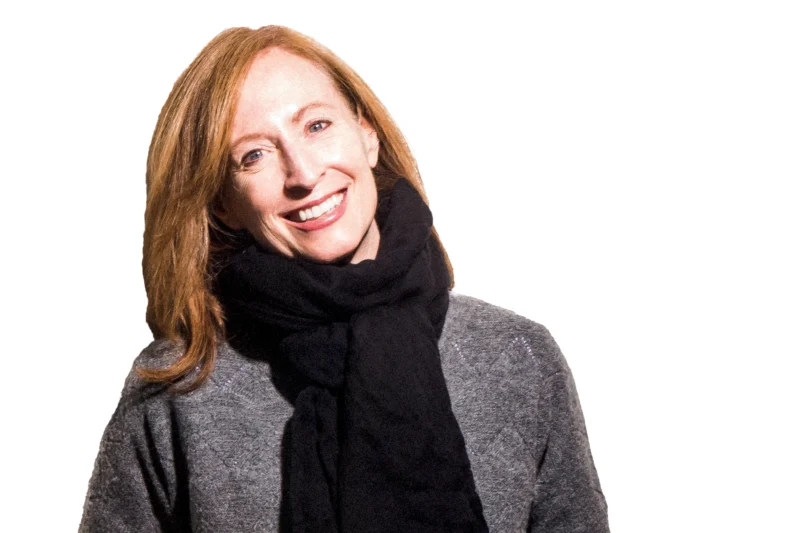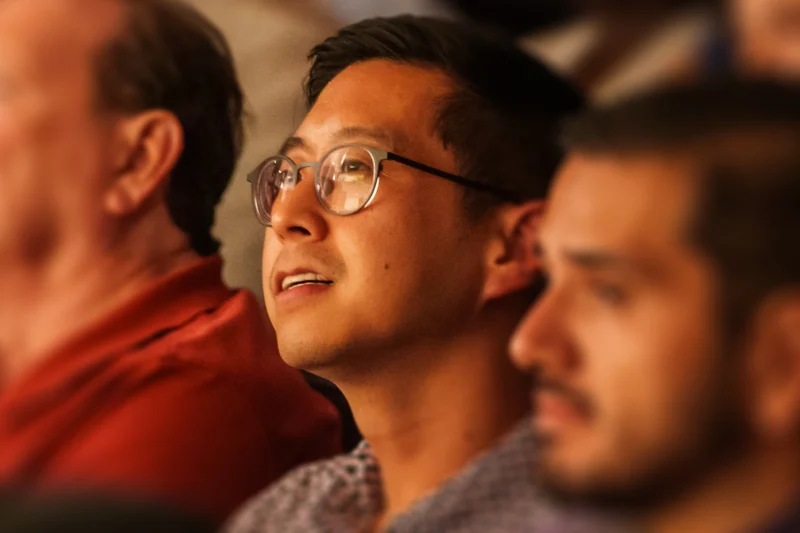By Matti Allison
As rehearsals began for The Goodman’s 48th production of A Christmas Carol, I spoke with Louis Vasseur (Ojibwe, Lac Courte Oreilles Band of Lake Superior), Chicago-area creative producer and longtime friend of The Goodman, about his experience working on some of the very first productions of what is now an established and much-loved Chicago holiday tradition.
Louis Vasseur: First of all, thank you for the trip down memory lane. Working on Goodman’s A Christmas Carol was some of the best times in my theater career. We all cared for each other, did some great work, and had a blast doing it. Sharing an iconic Christmas story, with an awesome cast and crew, was truly a special experience. When you do this show eight times per week throughout the holiday season, you create a special bond, everyone becomes family. We were making holiday magic and creating special memories for so many Chicago audiences. But at the same time our work prevented many of the cast and crew from celebrating the holidays with our own families. Being in it together definitely made it easier.
Matti: I think of you as The Goodman’s ambassador to Chicago’s Native community. How would you describe your relationship to The Goodman?
Louis: It’s an honor to be thought of in that role. I have been blessed to work on over 200 productions (theater, film, dance, music, video) and some of my favorite experiences were Goodman productions, particularly ACC and Cyrano. The only thing better is to share that experience with Chicago Native community members who never considered coming to The Goodman to experience amazing live theater. In my current role, I work on projects such as The Sweetest Season and 100 Free Acts of Theater. I mostly serve as a link between the Goodman and the Native Community. When Madeline Sayet brought her original one-woman show, Where We Belong, to the Goodman a few years ago, she encouraged The Goodman to reach out to the local Native Community. This proved to be a bit of a challenge. There are nearly 60,000 identified Natives representing approximately 150 different tribes in the Chicago area. How do you reach such a scattered demographic? After I wrote a review of Madeline’s show, some of The Goodman staff asked if I could meet with some of their marketing people to help with their outreach efforts. We discussed some of the challenges and developed some strategies. Offering comp tickets to shows helped. There were an estimated 1,000 local Community Members who came to see Madeline’s show, some comped, some paid. Madeline told me once after a performance she knew there were a group of Community members in the mezzanine, they were the only ones who laughed at an inside joke.
I work within the Community to talk about the different shows and encourage people to try seeing a show. I work with young Native creatives to encourage them to continue to pursue their creative dreams despite the challenges. Having them experience the works of Madeline and Dillon Chitto at The Goodman shows them that maybe they, too, can take their works to the next level. The Goodman providing opportunities for local Native artists such as Jim Terry and Negwes White helps reinforce The Goodman’s legitimacy of developing a growing relationship with the Native Community.
I see my role as someone who can work with both the Goodman (as well as other Chicago cultural institutions) and the Native Community to build a beneficial working relationship. My ultimate goal is to get a local Native creative project produced at and in partnership with the Goodman.
Matti: I particularly wanted to talk to you about A Christmas Carol. People already know about our wonderful casts but perhaps it isn’t as apparent that we have a talented team of theater artists behind the scenes working to make the magic happen every year. When were you employed at The Goodman and what was it like working on A Christmas Carol back in the day?
Louis: I worked the first three ACC seasons from 1979 through 1982. We had an amazing crew. Many of us had worked together on various productions at The Goodman and around town. One of the best things about being part of The Goodman ACC productions is that you had the manpower and resources you didn’t have elsewhere, especially at most of the Off-Loop theaters. It was a blast to work with good people on a large stage working some fun special effects. The only downside was that we couldn’t really see all the special magic we were creating for the audience because you were locked in a turntable or off in the wings.
Matti: I’m guessing the technical aspects of the show were a little more rustic a few decades ago. What was it like running the special effects?
Louis: Things were definitely different. This was one of the first things I noticed when I came to see ACC almost 40 years after I had worked on the show. This was before WiFi or cell phones. Our productions were at the proscenium theater in the Art Institute. The wing space and fly space was pretty limited so you needed to plan out how set pieces came on and off the stage and where they were stored. Our communication headsets were wired, which sometimes could restrict your mobility. This was a challenge sometimes with two people working in a limited space inside the turntable. Sometimes, they would get disconnected from the socket and you didn’t hear your cues. Fortunately, we knew the show well enough that we didn’t miss many. Also, I remember they weren’t all that comfortable either. Inside the turntable, we operated a variety of special effects manually. Sometimes the dry ice fog would get a little heavy and it would be difficult to breathe. Our snow effect was gently shaking a cloth bag filled with plastic snow hung above center stage. There was an art to gently shaking the bag to get the snow to fall just right. During intermission and after the show, we would sweep up the fallen snow and put it back into the bag. Eventually, the snow got too dirty mixed with stage dust and was replaced. This was also one of the first productions where some of the actors were mic’ed. However, the frequencies the mics were set to didn’t always work as well as hoped. I remember one time there was a police chase down Columbus Avenue and the audience were treated to the police chatter as they raced past the theater. All the sound was still analog but Sound Designer, Mike Schweppe (who later stood up at my wedding) added a sonic creativity to the production.
Current technical theater staff will view our special effects in the same category as the rotary phone. It’s quaint but they could never make it work. But believe it or not, we were state of the art for our time. Most importantly, the audiences enjoyed it.
Matti: There were some theater legends in the show in those years–any good stories about the lead performers?
Louis: Yes, we definitely were blessed. Director Tony Mockus, Sr. set the tone for the whole production. Although his size could be imposing, his smile and demeanor made everyone feel welcome. Bill Norris was our Scrooge. Although fairly young, he was already considered a legend among Chicago’s Off-Loop theater with productions at The Organic Theater and Victory Theater. I think he was the first Chicago actor to be cast in a lead role by The Goodman. He was just awesome to watch work. Once you got to know him you could experience his dry humor. For a couple seasons, I, and another crew member, would be inside the main turntable to create some of the special effects. Since we were essentially locked up on stage for over 45 minutes, we would get a little bored and start to play gags on Bill and then him on us. Or if we got too loud underneath him, he would start stomping his feet during his dialogue as his way to tell us to be quiet. Most of all, he was always gracious and appreciative of what the crew did to support the show. Del Close, sketch comedy legend and Founder of IO, was our Ghost of Christmas Past. He rode a ten-foot high Christmas Tree / Horn of Plenty wagon on castors. Before places we would help him up a ladder to his elevated seat. More often than not Del would hold court and teach a comedy class in the wings before being rolled out to applause. The iconic character actor Dennis Kennedy was also part of the cast. Dennis and Bill performed together in Organic Theater’s Bleacher Bums production, which was later broadcast on WTTW. Dennis and I later did summer stock together in Wisconsin. One of my jobs was to help him up and down some backstage stairs (it was difficult to see backstage after being under the on-stage lights. We would be there backstage discussing Chicago sports and other topics while waiting for his cue. He was a great guy.
One thing I do remember was that there was no differentiation between cast and crew. We all had important roles to play and everyone seemed to respect what others did.
Matti: Once again, speaking to you in your capacity as an important liaison between The Goodman and Chicago’s Native community; you’ve been bringing community groups to A Christmas Carol for several years now and I have to know who the biggest superfans are–like, is the show resonating with every generation or mostly the littles? (This is me shamelessly pandering for cute kid pictures).
Louis: As part of its outreach to the Chicago Native community, The Goodman has been very generous in providing comp tickets to many shows, including A Christmas Carol. The initial group was a dozen or so elders coming to see a show as a Sunday outing. Most had never seen live theater before, never mind going downtown to a cultural icon like The Goodman. These ladies would dress up to the nines and we would rent a bus to take them downtown and back. One of the best times was when the bus company ran out of rental buses and sent one of their party buses instead. It was truly a vision watching 20 elders getting off the party bus, dancing and singing with the disco lights for an afternoon at The Goodman. The group has expanded with whole families coming to see A Christmas Carol. I remember talking with one father after he and his family went to see ACC last year. He said he expected his kids would like the show. However, he was surprised when he discovered that he was laughing and cheering as much, if not more than his two daughters.
This program has taken seeing live theater at somewhere like The Goodman from being something only rich people do, to something Native community members of all ages can look forward to and enjoy. Seeing Native creatives like Madeline Sayet and The Sweetest Season performers on a huge platform like the Goodman, allows our younger creatives to feel they can share their stories as well.
Matti: Before you go, tell me more about the event you are producing in partnership with The Goodman’s 100 Free Acts of Theater.
Louis: I worked on the most recent production of The Sweetest Season last Spring. This was one of the first projects for the 100 Free Acts of Theater. I am producing/presenting William Smith – A Warrior in Time: A Commemoration of a Native Veteran and Iconic Community Member. This event will remember local community member, Bill Smith (Lakota) who followed his father and uncles into the Army. Bill served in Vietnam during the closing months of the war as well as various military operations in the Philippines, Central and South America. Bill was also a values member of the Chicago Native community. At 6’ 4”, with two foot-long eagle feathers topping his dance regalia, Bill was an imposing sight in the dance circle. His generous personality belied his imposing figure. As one Community told me, Bill would always show up wherever he was needed. The 100FA event will include a screening of a short documentary about Bill’s military service and his experiences as a Native Veteran. Unfortunately, Bill passed away before the documentary was completed so he never saw it. William Smith – A Warrior in Time will be held on November 15, 2025, at the American Indian Center – Chicago, 3401 W, Ainsle, Chicago, IL. The event is free and open to all. I encourage everyone to join us to celebrate Bill and learn more about the significant contributions made by Native Veterans throughout American History.
Matti Allison is The Goodman’s Director of Audience Development

